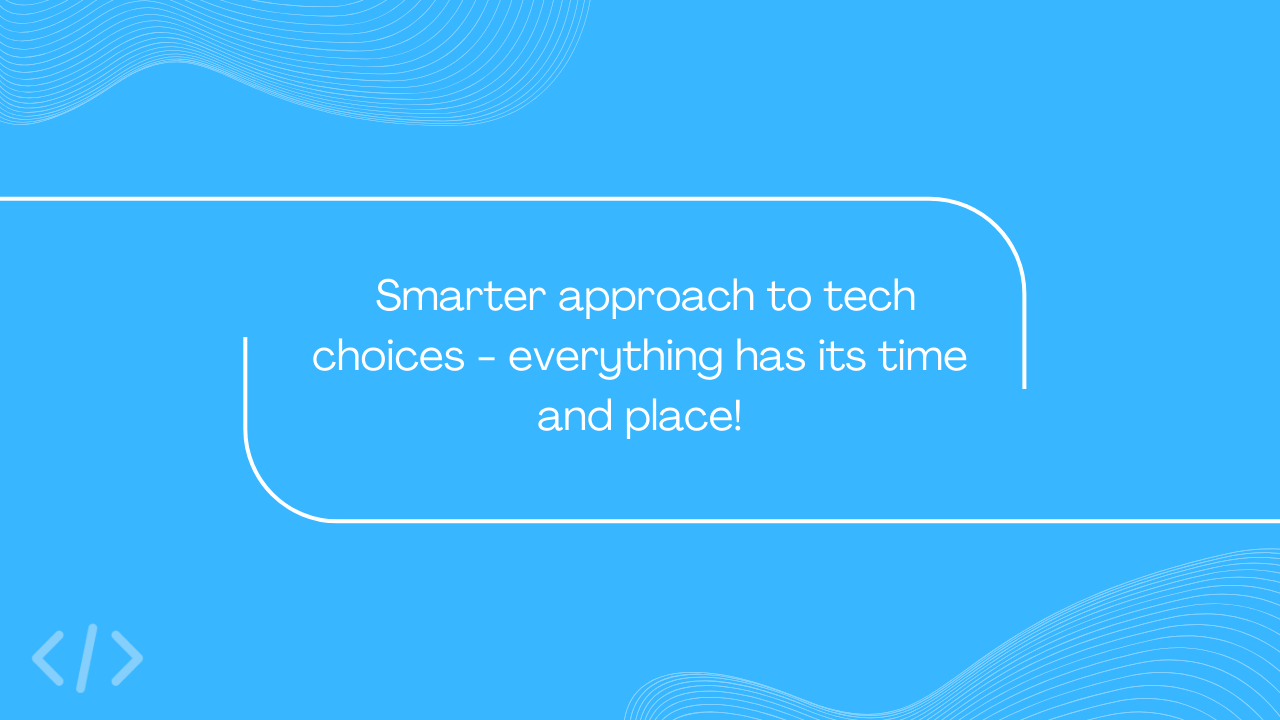Smarter approach to tech choices

Nowadays we are often encountering wars between software developers, who use different technological stacks to solve client’s problems. Today I would like to discuss this topic and tell you about my thoughts on why it doesn’t make sense. Article is universal and you can refer these reflections to each kinds of technologies – programming languages, libraries, frameworks, databases, cloud services and more.
Example: programming languages
Firstly, I would like to mention fact – perfect programming language doesn’t exist. Every language was created with a purpose in mind. They have differences with priorities – some of them prioritize speed, others safety, simplicity, or readability. While they do they work right in target area, they have weaknesses in others. Some examples:
Python
✅ Has simple, clear and readable syntax. Mainly used for data science, machine learning and automation purposes.
❌ Slower than many compiled languages. Can be a bottleneck in high-performance applications.
C
✅ Offers high performance and direct access to memory. Ideal for system and embedded programming.
❌ Requires manual memory management what can complicate application development and increase risk of mistakes. Not suitable for web development.
Java
✅ Ensure full code portability and strong type safety. Perfect for large and enterprise applications.
❌ Characterized by large amount of boilerplate code and relatively high memory usage. Not the best choice for small and light applications.
JavaScript
✅ Works natively in all web browsers and enable to create dynamic user interfaces. Perfect for front-end development.
❌ It lacks direct memory access, and uses dynamic typing. Not well-suited for high-performance computing, low-level programming and applications, which require strong type safety because
PHP
✅ Designed specifically for creating websites and is a safe choice in this area. Supports a huge number of hostings.
❌ Not good for real-time apps or system software because it’s mainly made for simple websites and isn’t built for high performance or deep system control.
As you can see they are no perfect, but each of them brings significant value to business. Most important is to choose the right tool, with usage of which you can solve particular problem in the best way.
Context also matters
When selecting technology, it’s not just about language features or performance benchmarks. Other factors play similar role too:
🔷 Team’s expertise and familiarity.
🔷 Ecosystem – available libraries, frameworks and community support.
🔷 Project deadlines and maintainability needs.
🔷 Long-term vision and scalability.
Ignoring these aspects and blindly favoring popular or trendy technologies often leads to unnecessary complexity or even failure. The same thought links to your favorite programming language or other tools. You shouldn’t choose tools based on your preferences, but after considering all these factors.
Conclusion? Focus on solving problems, not winning arguments
Instead of engaging in debates about the superiority of one technology over another, let’s focus on what really matters – delivering effective solutions. Choice of technology should be based on the specific requirements of the project, business context and available resources. Almost never on personal preferences or fashion.
Remember – true professionalism lies in the ability to match the right tool to the specific problem. Understanding this will definitely make you a more valuable programmer and lead to better project results.